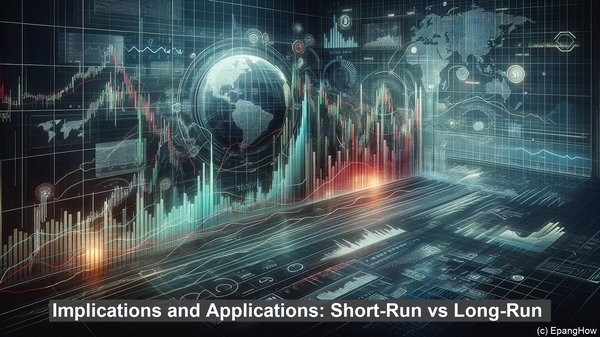Introduction: The Time Dimension in Economic Analysis
Hello everyone! When it comes to understanding the dynamics of an economy, time plays a crucial role. Economic analysis, therefore, often takes into account different time horizons. Two key concepts in this regard are short-run and long-run analysis. While both provide valuable insights, they differ in terms of the time frame considered and the factors at play. In this article, we’ll explore these differences in detail, shedding light on their significance in economic decision-making.

Short-Run Analysis: A Closer Look
Let’s begin by focusing on short-run analysis. As the name suggests, this approach examines the economy’s dynamics over a relatively brief period. Typically, it considers a time frame where certain factors, such as capital and technology, remain fixed. In this context, the primary driver of change is often the level of demand. Short-run analysis is often associated with the concept of ‘ceteris paribus,’ which assumes that all other factors remain constant. This allows economists to isolate the impact of changes in demand on various economic variables, such as prices, output, and employment.

Long-Run Analysis: A Broader Perspective
Now, let’s shift our focus to long-run analysis. Unlike the short-run, the long-run considers a more extended time frame, where factors like capital and technology can vary. In this context, the economy is often seen as being in a state of equilibrium, where various factors have adjusted to their long-term values. Long-run analysis aims to understand the forces that shape this equilibrium. It delves into aspects such as investment, technological progress, and institutional factors. By doing so, it provides insights into the economy’s potential growth rate, its structural characteristics, and the factors that can influence its trajectory over time.
Implications and Applications: Short-Run vs Long-Run
The differences between short-run and long-run analysis have significant implications. Short-run analysis, with its focus on demand-driven changes, is often employed to understand the impact of policy measures or external shocks. It helps in assessing the immediate effects on variables like prices and employment. On the other hand, long-run analysis, with its emphasis on equilibrium and structural factors, aids in understanding the economy’s long-term growth prospects. It can be instrumental in formulating policies related to investment, education, and innovation. By considering both short-run and long-run perspectives, policymakers can gain a comprehensive understanding of the challenges and opportunities an economy faces.
